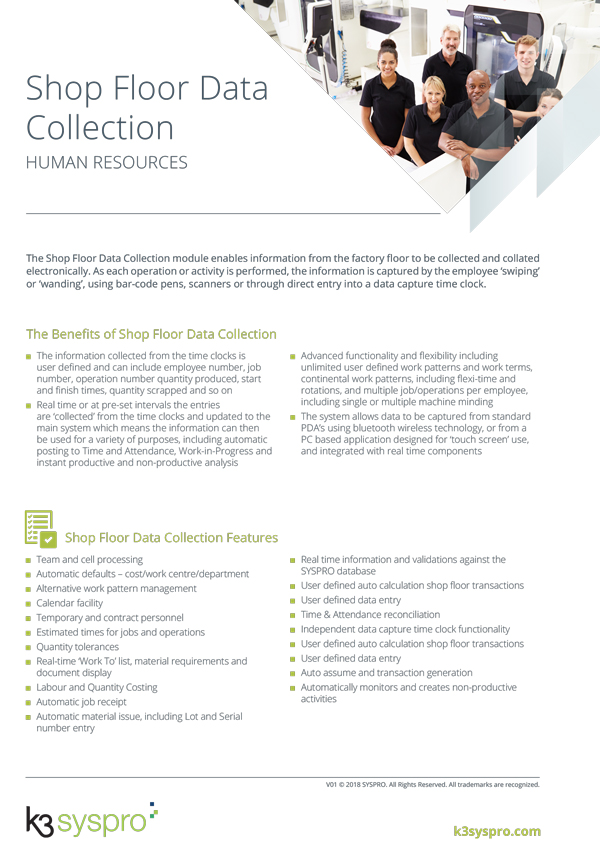Real Time Data Collection
September 11th, 2013
Tim
 The Real-Time Data Collection (also known as Shop Floor Data Collection) module enables information from the factory floor to be collected and collated electronically. As each operation or activity is performed, the information is captured by the employee ‘swiping’ or ‘wanding’, using bar-code pens, scanners or through direct entry into a data capture time clock.
The Real-Time Data Collection (also known as Shop Floor Data Collection) module enables information from the factory floor to be collected and collated electronically. As each operation or activity is performed, the information is captured by the employee ‘swiping’ or ‘wanding’, using bar-code pens, scanners or through direct entry into a data capture time clock.

- The system allows data to be captured from standard PDA’s using bluetooth wireless technology, or from a PC based application designed for ‘touch screen’ use, and integrated with real time components
- The information collected from the time clocks is user defined and can include employee number, job number, operation number quantity produced, start and finish times, quantity scrapped and so on
- Real time or at pre-set intervals the entries are ‘collected’ from the time clocks and updated to the main system which means the information can then be used for a variety of purposes, including automatic posting to Time and Attendance, Work-in-Progress and instant productive and non-productive analysis
- Advanced functionality and flexibility including unlimited user defined work patterns and work terms, continental work patterns, including flexi-time and rotations, and multiple job/operations per employee, including single or multiple machine minding.
- Team and cell processing Team and cell processing
- Alternative work pattern management
- Temporary and contract personnel
- Estimated times for jobs and operations
- Quantity tolerances
- Real-time ‘Work To’ list, material requirements and document display
- Labour and Quantity Costing
- Real time information and validations against the SYSPRO database
- Time & Attendance reconciliation
- Independent data capture time clock functionality
- User defined auto calculation shop floor transactions
Download Case Study
At the beginning and end of every task, the operator swipes his card, then uses a scanner to read the bar code on the job card. A key on the terminal allows the operator to sign on/off against several jobs that might be undertaken in succession on the same aircraft Ian Harvey, Systems Accountant, KLM UK Engineering
![]() The Real-Time Data Collection (also known as Shop Floor Data Collection) module enables information from the factory floor to be collected and collated electronically. As each operation or activity is performed, the information is captured by the employee ‘swiping’ or ‘wanding’, using bar-code pens, scanners or through direct entry into a data capture time clock.
The Real-Time Data Collection (also known as Shop Floor Data Collection) module enables information from the factory floor to be collected and collated electronically. As each operation or activity is performed, the information is captured by the employee ‘swiping’ or ‘wanding’, using bar-code pens, scanners or through direct entry into a data capture time clock.


